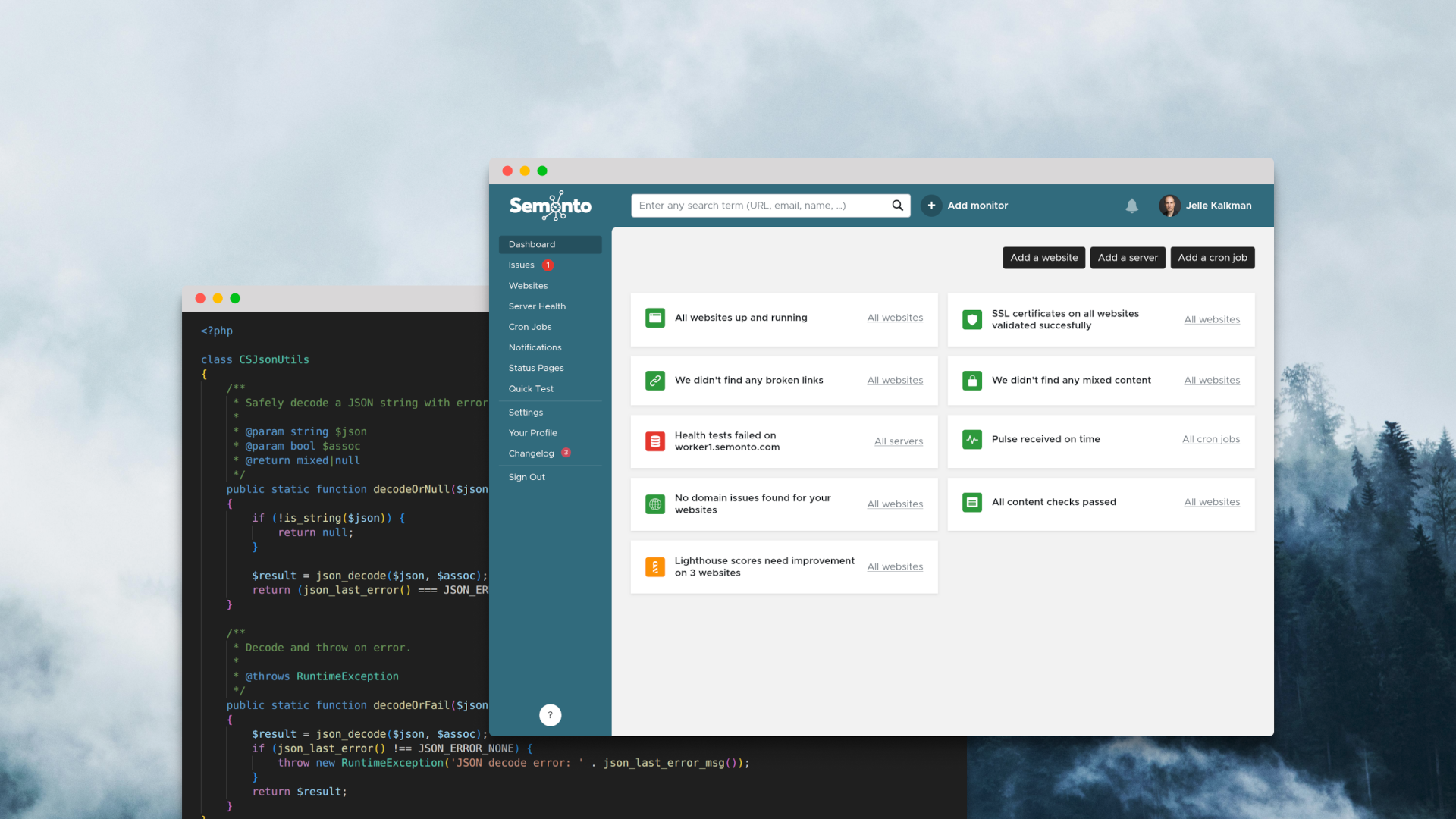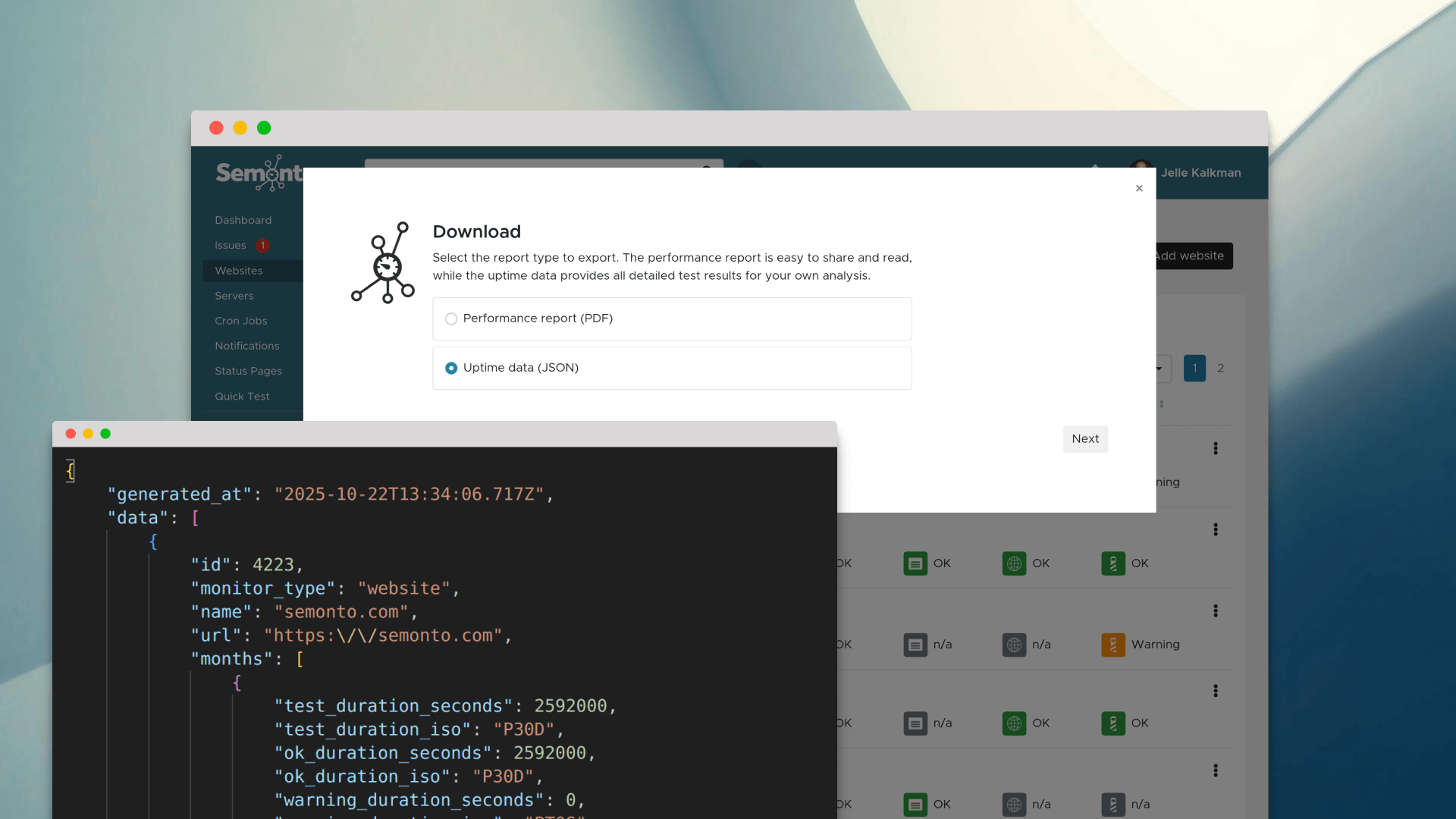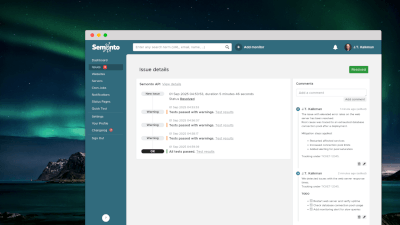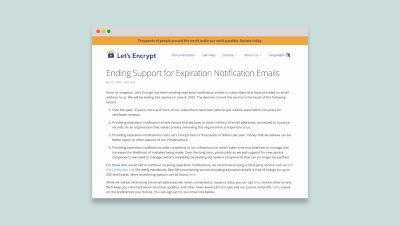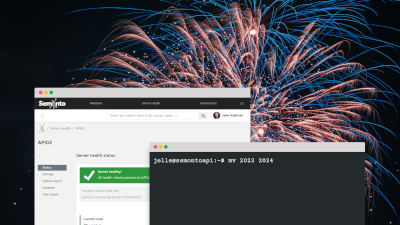Why agencies need to monitor the websites they build
Your clients trust you to keep their websites running. Whether you manage ten websites or hundreds, an error message or broken sales page can damage both their business and your reputation. That’s why uptime monitoring is a must. It alerts you the moment something breaks — so you can take action before your client even notices. If you’re not using a tool for that yet, you are already behind.
The problem with reactive monitoring
But monitoring in itself is not enough. Traditional, reactive monitoring only tells you something is wrong after the damage has already been done: the page didn’t load, the visitor already left, the sale was lost. It’s like installing a smoke alarm, but only reacting after the fire has spread. You need to be faster — and wiser about it. Some problems can be prevented.
How to be smarter about it
Proactive monitoring enables you to identify issues before they occur. Instead of just responding to outages, you prevent them. That means fewer support tickets, fewer client complaints, and a smoother experience for everyone. It’s a shift from problem-solving to continuous care, which is precisely what your clients expect from a modern agency.
What does proactive monitoring look like?
Here are some examples of proactive website monitoring:
- SSL certificate monitoring:
Avoid embarrassing HTTPS errors (‘Your connection is not private”) by renewing certificates before they expire. Use a website monitor that warns you, for example, a week in advance that the certificate is about to expire so you can make sure the renewal goes through. - Domain monitoring:
Never let a client lose a domain to a competitor due to a missed domain name renewal — get notified well in advance when the renewal date is approaching so there is no chance of anything going wrong. - Server health monitoring:
Don’t wait until a server problem causes downtime or errors, but proactively set thresholds for common problems that gradually build up, like disk space, CPU load and memory usage. Get notified when the threshold approaches to prevent performance issues or crashes.
Tip: use a tool that you can customize
Some monitoring tools even allow you to choose how long in advance you want to get notified of specific issues and through which channel. You can even create an escalation system to ensure that someone else follows up if you are unavailable. In other words, it matters which monitoring tool you use.
Prove your worth
Clients love transparency. It’s not enough to keep websites up and running (let’s be honest, they don’t really care how you do it, as long as the results are there). These results can be demonstrated through a regular website performance report. Some monitoring tools have the option to create such a report white label, so you can turn the data collected from the monitoring into visuals and summaries to prove the performance of the websites you have created.
Semonto: the monitoring tool for website agencies
Semonto was built with agencies in mind. From one dashboard, you can monitor multiple client websites, get real-time alerts, and create beautiful branded reports. We help you prevent downtime — not just react to it. Try Semonto free today and discover how monitoring can strengthen your client relationships and your reputation.
